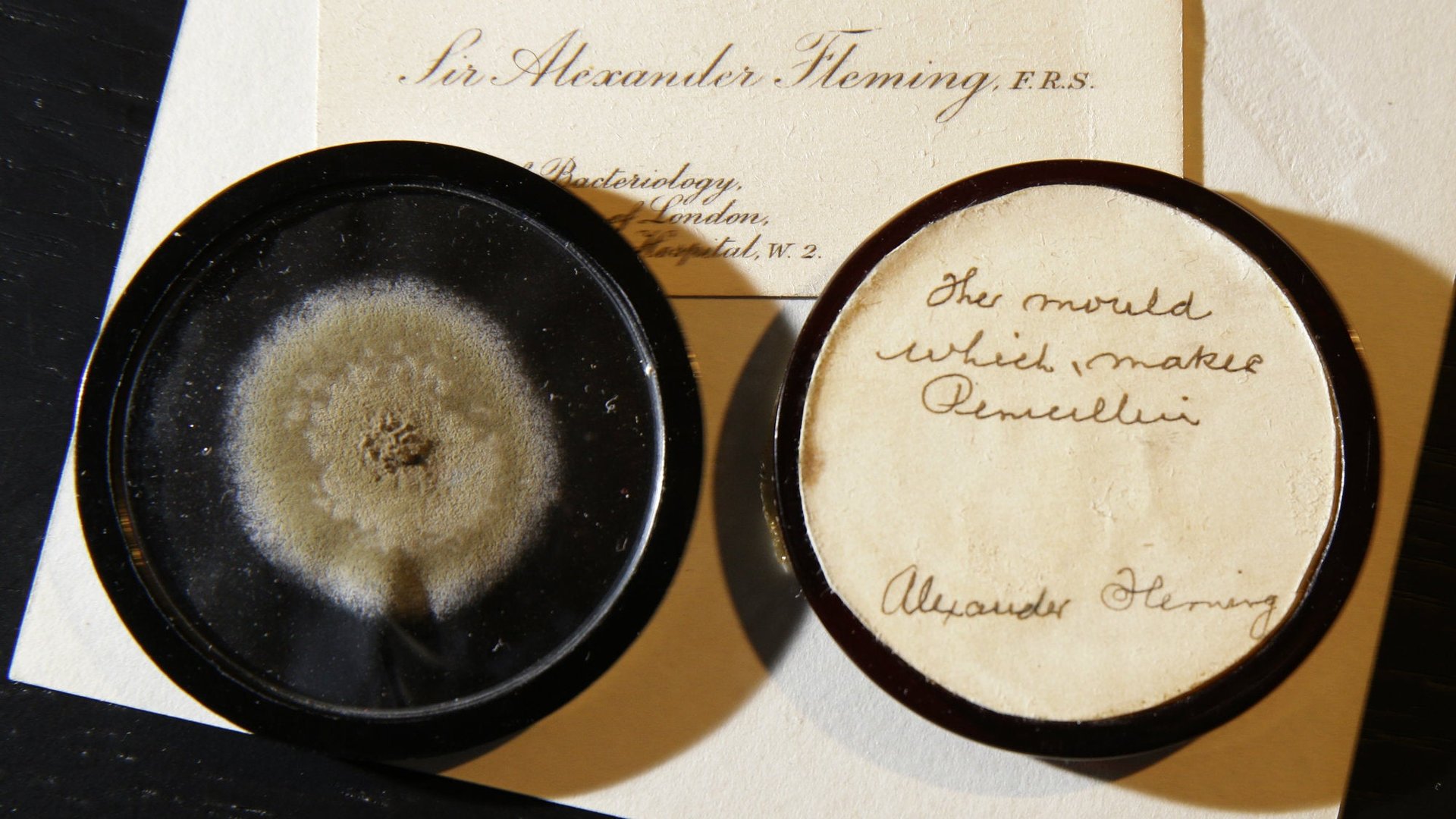Someone paid $15,000 for a chunk of decades-old mold
It’s a bull market for famous fungus. A preserved specimen of the mold that led to Alexander Fleming’s discovery of penicillin just sold at auction in London for £11,875 (about $14,500).


It’s a bull market for famous fungus. A preserved specimen of the mold that led to Alexander Fleming’s discovery of penicillin just sold at auction in London for £11,875 (about $14,500).
The winning March 1 bid at Bonhams was nearly three times the estimated sale price. Yet in the strange and fascinating world of mold economics, it’s a steal. In December, a buyer plunked down $46,250 for another preserved sample of Penicillium chrysogenum, reportedly from the original culture that gave rise to the first antibiotics in the 1920s. Fleming grew the comparatively bargain-priced mold sold this week at a later date and gave it to his niece as a gift.
Reading about Fleming now, it sounds as if virtually everyone who spent time around the scientist ended up with a piece of Penicillium chrysogenum. The Nobel Prize-winning scientist handed out homemade mold medallions as gifts, thank you notes, and calling cards, to the point where Queen Elizabeth II’s husband Prince Phillip complained upon receiving “another of these bloody things.”
The $46,250 mold was a thank-you gift to Fleming’s neighbors, the Bax family, after Mr. Bax scared off a burglar trying to break into the scientist’s home. The buyer also got to keep an explanatory note from Fleming’s housekeeper wrote to the Bax family at the time: “P.S. As though you didn’t know—but just in case—this round affair is a blob of the original Mould of Penicillin, not to be confused with Gorgonzola cheese!!!”